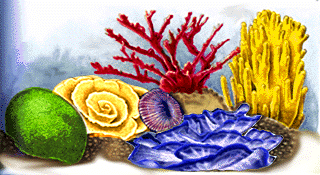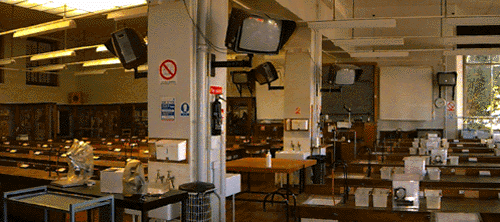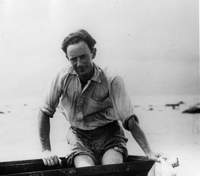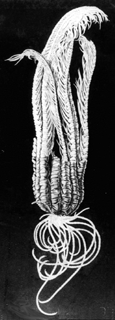
The Museum and the Collection (1928-1950) |

The acquisition books show that once housed in the Ashworth Laboratories on West Mains Road, the collection was enlarged continuously from 1928 onwards. It was cared for by a full time curator, registered as an official Natural History Collection by the Scottish Museum Council and open to the public. It now holds many historically and scientifically important specimens. Most prominent among these is the collection of corals donated by Sir Maurice Yonge.
Yonge, who graduated under Professor Ashworth, was selected at the age of 28 to direct and lead a sixteen month expedition to the Great Barrier Reef. Ashworth took advantage of this expedition, the first of its kind to study the general ecological aspects of a coral reef, to ask Yonge to make a coral collection specially for the museum. These corals are now the subject of a special display in memory of Sir Maurice, who spent the years of his retirement in the department.
After Ashworth's death in 1936, the department continued
to flourish. The Professors of Natural History and Zoology
continue to be eminent scientists and public figures. Under
the influence of these Professors and advances in knowledge
and technology, the department has evolved so that the
diverse disciplines under which animals and their biology
are studied are well represented. In addition to teaching
and research in the topics originally covered in 1928 -
vertebrate zoology and physiology, invertebrate zoology,
parasitology
and entomology - the department now also teaches and carries
out research into: immunology, HIV and AIDS,
developmental biology, ecology and behaviour and cellular
and molecular aspects of animal biology and evolution.
The major distinction between the work of the Department
now and in Ashworth's time is the experimental nature of
modern Zoology; a natural progression from the descriptive
nature of the work done in the first quarter of the
twentieth century. A five-storey extension, built in the
1960s, houses the research laboratories. To reflect
these changes, the department is now known as the Institute of
Cell, Animal and Population Biology (ICAPB).
 The museum area, as laid out by Ashworth, flourished until the 1950's when, unfortunately, the need for increased laboratory space which accompanied significant rises in student intake came to be more important than the needs of the collection. The wall dividing the main teaching laboratory from the museum was, therefore, knocked down and many of the cases were moved either into the corridor or upstairs to the gallery. The three pillars in the main laboratory show where the dividing wall once stood. This reduction in display area meant that many specimens, particularly the larger stuffed animals and mounted heads had to be discarded. Fortunately, the small invertebrate material and many of the smaller vertebrate specimens escaped this purge and remained in their cases. The general reduction in space led inevitably to the remaining display cases serving only as store cupboards and specimens were tucked away in all sorts of nooks, crannies and ducts throughout the department. |








 Among this comprehensive collection of invertebrate and
vertebrate specimens are to be found such diverse items as:
Among this comprehensive collection of invertebrate and
vertebrate specimens are to be found such diverse items as: